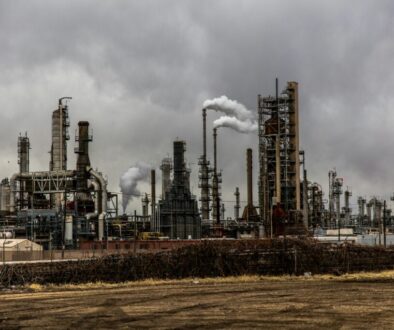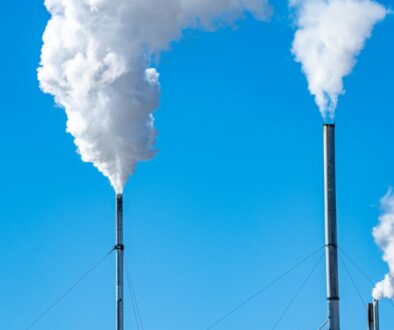PFAS found in household dust near North Carolina chemical plant
Residues of harmful industrial chemicals, including some phased out of production 20 years ago, have been found in household dust in research that shows exposure risks go beyond contaminated food and water, according to a study published Monday.
The study analyzed kitchen dust collected in 2019 from 65 households in an area of North Carolina near a plant owned by DuPont spin-off company Chemours, looking for 48 types of toxic per- and polyfluoroalkyl substances (PFAS). The researchers identified at least one type of PFAS in every sample, with higher concentrations of the chemicals in homes located closer to the facility.
Twelve of the PFAS chemicals the researchers detected were per- and polyfluoroalkyl ether acids [PFEAs], a subset of PFAS chemicals that had previously been found in the plant’s air emissions or wastewater. All were detected at least once in the dust samples, with seven found in more than three-quarters of all samples. The researchers also found high levels of PFAS chemicals not necessarily linked to the plant in over 90% of samples.
“The detection of PFEAs in residential dust is important considering growing evidence of PFEA toxicity,” the authors wrote in the journal Environmental Science and Technology. “Our findings demonstrate the need for more rigorous exposure monitoring of dust in homes in PFAS impacted communities and more work to identify sources of ultrashort chain PFAS.”
Out of the 65 households, nine reported having at least one participant who had ever worked at the nearby chemical plant, the researchers said.
The researchers found that 89% of dust samples contained GenX, a type of PFAS linked to kidney damage but touted as a replacement for harmful legacy chemicals. They also discovered that 89% of samples contained trifluoroacetic acid (TFA), a chemical formed when refrigerants used to replace ozone break down.
The authors define TFA in the study as an ultrashort chain PFAS, although there has been disagreement over whether TFA belongs within the class of thousands of PFAS chemicals – while Europe considers TFA a type of PFAS, the US Environmental Protection Agency (EPA) does not.
The researchers also detected legacy PFAS chemicals in many of the samples, finding perfluorooctanoic acid (PFOA,) which was historically produced at the plant but was phased out of production nationwide in 2015, in 74% of the dust samples, and perfluorooctanesulfonic acid (PFOS), which was produced elsewhere in the US until 2002, in over 80% of samples.
In late 2019, after the study samples were taken, a consent order from the North Carolina Department of Environmental Quality required the Chemours plant to install technology that would reduce its PFAS air emissions by 99.9%. The researchers suggest a follow-up study should be conducted to assess whether the intervention has reduced PFAS in nearby residents’ household dust.
PFAS chemicals are widely used in chemical manufacturing processes and in household products, with some linked to a various health effects including a weakened immune system, high cholesterol, liver damage, pregnancy complications and certain cancers.
The new analysis took place as part of the GenX Exposure Study, a project that began in 2017 to assess PFAS exposure among people located near the Chemours plant, which for decades dumped GenX into the Cape Fear River, a major source of drinking water for the region.
Previous research has raised concerns about PFAS in household dust. In 2017, the EPA analyzed 241 paired dust and tap water samples from homes in 37 states for PFAS, finding four types of PFAS in at least half of the samples. These included PFOA, which an international cancer research group classified as carcinogenic to humans, and PFOS, which it classified as possibly carcinogenic.
A 2022 review published in Current Environmental Health Reports found that building materials, furniture and consumer products can all contribute PFAS to the dust in indoor spaces. Daycares and workplaces were major sources of PFAS exposure, the authors found, since they tend to use treated carpeting and cleaning products that contain PFAS chemicals.
(Featured image by Karolina Grabowski via Unsplash.)
 EWG
EWG



April 3, 2025 @ 6:51 am
awesome